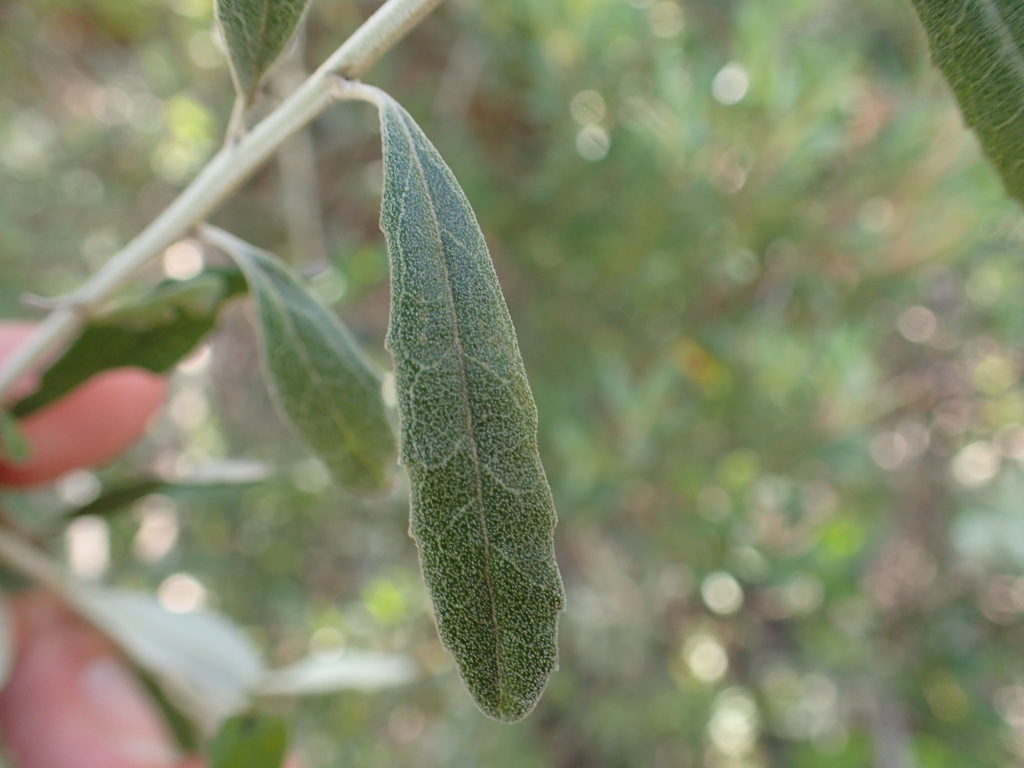Olearia phlogopappa subsp. insularis
MessinaBushy shrub to 1.5 m high. Leaves thick-textured, oblong, obovate or narrow-elliptic, 15–43(–70) mm long, 3–10(–15) mm wide; margins crenulate to crenate; upper surface yellowish-green or grey-green, with mid-dense to sparse stellate hairs, sometimes glandular; lower surface cream, white or grey (sometimes yellowish when young), densely stellate-hairy, rarely glandular; petiole 2–5 mm long. Capitula pedunculate, in terminal or subterminal panicles or corymbs. Flowers Oct.–Dec.
GipP, EGL, WPro, Strz. Also Tas. (Bass Strait islands). Restricted to coastal heath and woodland, on and west Wilsons Promontory (Inverloch, Waratah Bay, Cape Patterson), with isolated records from the Gippsland Lakes area and Mallacoota, generally in deep sands on the leeward side of primary dunes and secondary dunes.
Superficially resembles O. phlogopappa subsp. flavescens but generally distinguished by the narrower, lobed leaves and coastal habitat.
Plants from the Gippsland Lakes area have crenate leaves that are distinctly glandular on the upper surface, and are somewhat intermediate with subspecies continentalis. However, they can be distinguished from subspecies continentalis by the oblong to obovate leaves that are usually shorter than c. 4.5 cm long.
 Spinning
Spinning